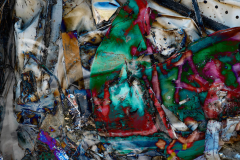
These photographs are the beginning of a new area of exploration. During a three week trip through Baja in November 2014 I was immersed in the aftermath of Hurricane Odlie. Hurricane Odlie was the most intense tropical cyclone to make landfall over the Baja California Peninsula in the satellite era. Recovery would take many years. With this as a backdrop two separate opportunities came together and created this series. They present my reaction to the hardship and hope for the future of Baja.
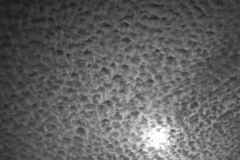
'Above Us All' is a series of moments when looking up radiates visual music. It may be only a single note or develop into an elaborate composition. The sky is free, natural and unsympathetic to what is happening below. Given a glance one can find reason for joy, fear and the many emotions in-between.
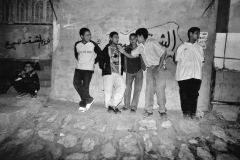
Egypt offered both opportunity and challenge to view and record on film a society with a vast history. In the context of current happenings, Islamic countries like Egypt bring out strong opinions and strong emotions. A closer look helps bring a better understanding. The photographs are a response to a way of life I find unusual and mysterious.
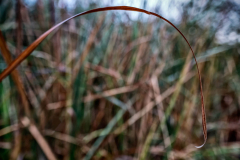
End of the Line: Images that focus on what might be viewed as a termination point. They also could be considered a point in time or a metaphor for an individual's lifeline. We are all moving in different directions at the same time and this movement specific to one's passage can be quite exciting. The twists and turns are unpredictable but will eventually end at some point.
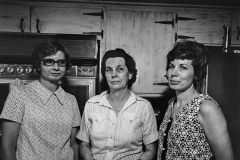
When I look back at my life and see how photography has captured the essence of who I am, I realize how important all the elements around us are. Some may seem distant, others may be too close to take notice of, but each can have an effect on our travels. Have you ever tripped on a small stone or been blinded by the setting sun? This experience can become personal or just the subject of speculation: the what-ifs in life. This is where photography has the ability to savor the moment and study the possibilities. Once captured, the photographs become an element of a life - the life of the photographer and part of his family. The photographs in this display are a glimpse of one man’s passage and the family that has made it so fulfilling. The world is our family for better or worse and to be able to appreciate it all, is a privilege.
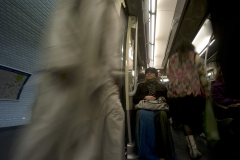
'Fragments' is a study of the depths a photograph can be viewed. Each image is part of a perceived story that does not necessarily involve truth. What the viewer brings is its reality at that moment. An open mind is all that is needed. A personal view of life brought out by ones imagination.
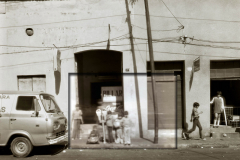
This series involves the passing of time and how all places are constantly in transition. It draws from the poetic nature of the Mexican culture. The romantic character of Guadalajara and its people are the background. Subtle changes and movement along with the rigid structure of place create the image.
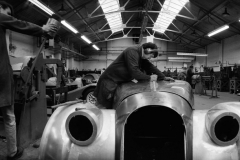
A visit to the Morgan Motor Company is a trip to a true understanding of the words “hand built”. These photographs of the people who produce the car appear to be of a different time. It seems to be a place where time stands still. In reality much does change. Automotive advances keep improving the Morgan. New models are being introduced with regularity. And best of all the original character of the Morgan remains intact.
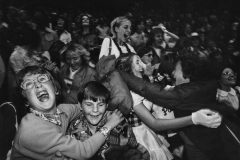
The photographs in this series came out of a fascination with people expressing themselves. Individuals experience life and all its opportunities in many ways. Nightlife offers interactions that can be thought of as a form of monkey business. It is a time to enjoy life. The activities can be just simple relationships or a group of unpredictable interrelationships. Part of the challenge is to make sense of the complex elements. When people enter the same space the flow of the action is like watching the ocean surf. Mother Nature can whip up a mighty storm or allow the waves to gently reach the shore. There are times the action is scattered and others where it has a poetic nature. My goal is to capture these special moments.
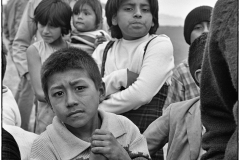
On June 5th 1970, the USS GUAM received orders to proceed through the Panama Canal to Chibote, Peru to bring disaster relief to earthquake victims. As a member of the USN Atlantic Fleet Combat Camera Group I was assigned to cover the relief efforts and met the helicopter carrier in Panama City. Upon arrival at Chimbote, Marine units provided assistance to earthquake victims by transporting medical teams to remote areas, transporting victims to medical facilities and delivering more than 55 tons of relief supplies. In addition to the documentary coverage of the operation I was able to create the following studies of the people affected by the earthquake.
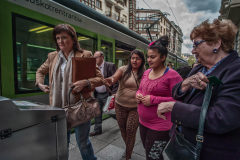
Street Conversations are photographs that explore the social interaction of people chatting in public. It is a way of experiencing those around us as they are and not necessarily how they want to be seen. I call this real life. Sometimes the encounter is not flattering although I look to avoid embarrassment in most situations. It is interesting how the changing times have affected interpersonal relationships on the street. The challenge is to find these conversations and capture the activity without affecting the photograph with my presence.

It was a party and I had been photographing parties for several years. At the time I was just working to add to an ongoing project. But after one night out in the forest north of the Grand Canyon I knew this would be a long-term encounter. For the next three years the Dirty Dozen was a central part of my photographic efforts. The experiences went from the rush of being among a pack of motorcycles charging down a mountain road to the subtle relationships between members and the women who travel with them. Live hard and die young is what it was about. The reality of this lifestyle turned out to be true.
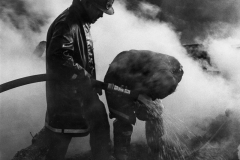
Taking photographs for a family album was the expected reason to use a camera in the early 1960's. The next step was having a job needing photographs. Another option was taking pictures for the art of it but this was viewed as a county fair activity and considered a hobby. Early on I knew there were more possibilities and it had to do with experiencing the world around me, being sensitive to the emotional aspects observed and capturing the many interrelationships in a personal style. It was during this period lessons were learned and created the ability to follow through on the many future opportunities that came along.
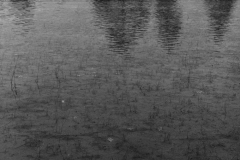
Photography can offer a passage to a place in time for study and enjoyment. Most photographs are very literal and contained. This series of Transitional Landscapes could be considered to fit these concepts, although my interest also includes what is beyond the actual image. Using one’s imagination a person can explore other dimensions beyond the height and width and specific subject matter of the photograph. The limits of exploration are personal based on experience, attitudes, inventiveness, and to a large degree an adventuring spirit.
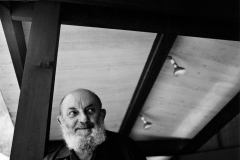
Over a five-year period in the 1970s photography changed for me. In the past I had been impressed by the work of many photographers but looked at gaining from their expertise as a textbook experience. Attendance at the 1973 Ansel Adams Winter Workshops brought direct contact to photographers and the work I was only able to see in books. This experience continued as an assistant in future Ansel Adams Workshops, Friends of Photography Workshops and the completion of my MFA in Photography at Arizona State University.
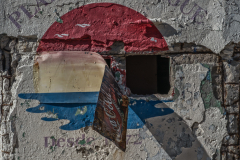
Why do people photograph walls? Walls stop you and make you look. They can show the passage of time and become abstract compositions of interest. They can offer abrupt statements, show a person’s interests or offer openings to a new world. They are everywhere (ubiquitous) and individualistic. Some say that the photograph of a wall may be representative of the photographer himself and of course photographing is better than walking into a wall.
